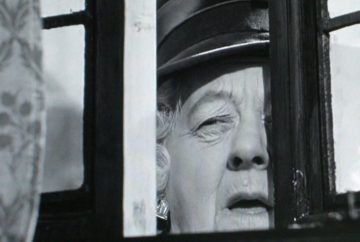Briallen Hopper at Public Books:
 Unlike Agatha Christie’s best known novels, At Bertram’s Hotel (1965) barely has a plot. Its one murder takes place almost three-quarters of the way through the book, and it is solved more through intuition than detection. Though Miss Marple is present, she has little to do beyond eating muffins and shopping for tea towels—or, as she calls them, “glass cloths.”
Unlike Agatha Christie’s best known novels, At Bertram’s Hotel (1965) barely has a plot. Its one murder takes place almost three-quarters of the way through the book, and it is solved more through intuition than detection. Though Miss Marple is present, she has little to do beyond eating muffins and shopping for tea towels—or, as she calls them, “glass cloths.”
But I have been rereading Agatha Christie for decades, and I have a special admiration for At Bertram’s Hotel. Christie’s more streamlined Art Deco style of the 1920s and ’30s yields here to the expansive nonchalance of a late-career writer whose sales figures were on track to rival those of Shakespeare and God. What makes it unsatisfying as a work of detection paradoxically makes it excellent as a case study of why one might read mystery novels—and, more to the point, why one might reread them.
More here.
